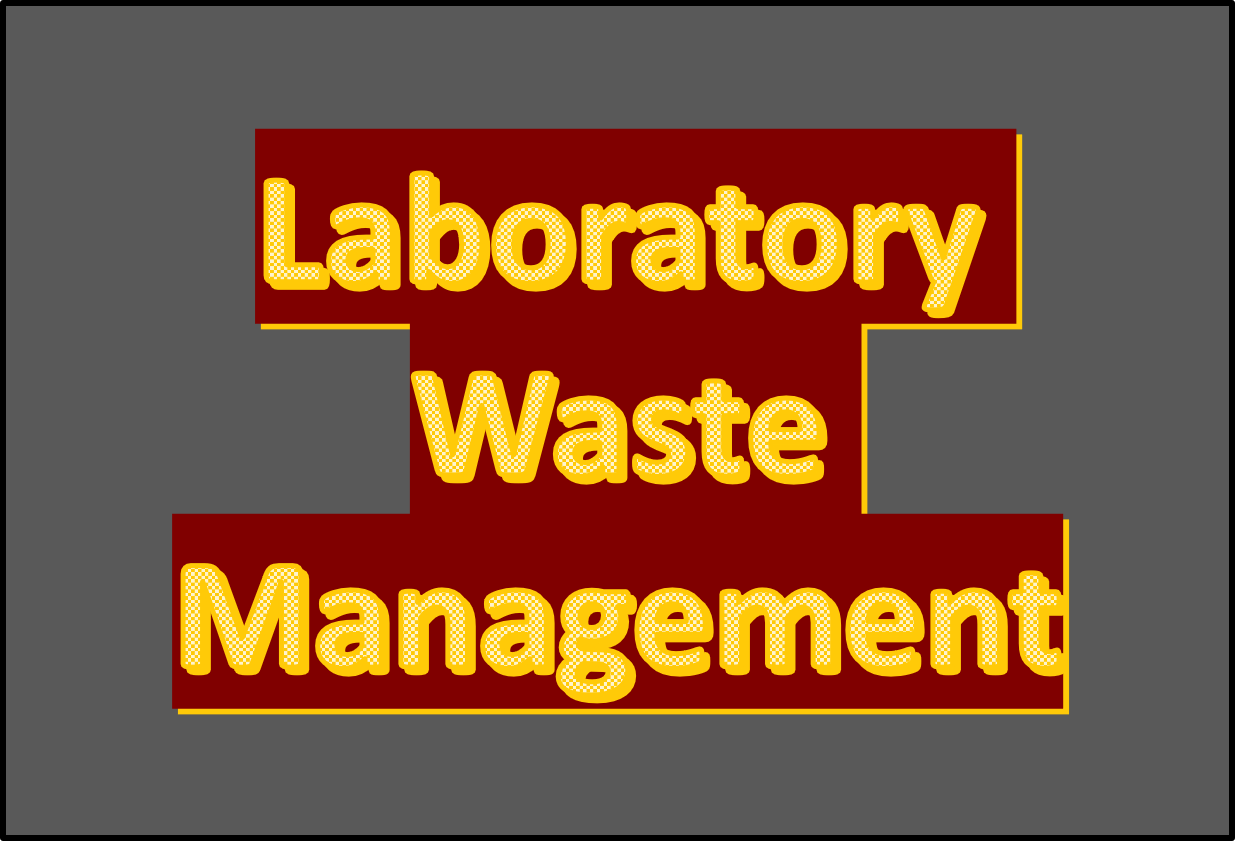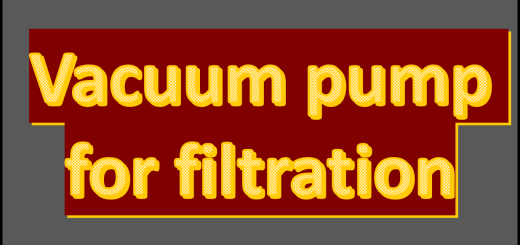Sop for Laboratory waste management

laboratory waste management
This article describes about (Standard Operating procedure) Sop for Laboratory waste management
Sop for Laboratory waste management
I. Purpose & Scope of Laboratory waste management :
- To provide a general methodology to be followed for Laboratory waste management
- Applicable to all personnel who are working in Quality control laboratory.
II. Responsibilities:
• All Quality Control and related personnel shall be responsible to follow and implement this SOP for Laboratory waste management
III : Introduction and Procedural Part :
PROCEDURE OF LABORATORY WASTE MANAGEMENT :
-
-
INSTRUCTIONS FOR LABORATORY SAFETY
- Laboratory area, Reagent/Chemical shelf, Instrument & working benches shall be neat and clean round the clock. Work place shall be cleaned on completion of exercise.
- Clean apron shall be worn in the laboratory for protection from splash and spill.
- Gloves shall be worn while handling the corrosive, sensitizing or toxic chemical.
- Disposable latex or vinyl gloves shall be used for handling of powder.
- Disposable cotton gloves shall be used for handling of Carcinogenic powder.
- Safety goggles and nose mask shall be used during analysis in chemical room and it will be removed while work on computer system or documentation activity.
- Fuming hood shall be used while working with hazards and poisonous material, which is toxic odoriferous & volatile compound.
- Suction bulb shall be used for pipetting; never suck the solution through pipette by mouth.
- Ice from laboratory fridge shall not be used for eating purposes.
- Food and eating material shall not be brought into the laboratories. Never eat or drink in the laboratories.
- In case of working with flammable chemical it shall be ensured that there is no source of ignition nearby working place to cause a fire or explosion because of liquid spill and vapor release.
- Chemical and reagent shall be handled carefully while carrying from one place to another place.
- All chemical and reagent shall be properly labelled and shall have date of expiry.
- Chemical shall not be sniff to test or check and inhalation of chemical shall be avoided as Hood shall be used for volatile chemical and reagent.
- Reagents, Chemicals, equipment’s shall be returned to their proper place immediately after use. The sample in testing process shall also be placed on the designated place after testing if sample is required for further testing.
- Chemical, especially liquid chemical shall never be stored on the floor; it shall be placed in close door cabinet. Large chemical, reagent bottle shall not be kept over bench top. Concentrated acid, corrosive liquid or chemical shall not be placed on the top of bench shall be placed on designated place below the eye level.
- Information of spillage and damage of electric / mechanical/ other equipment failure shall be shared with the co-employ and shall be brought to the knowledge of superior. If possible area/equipment / instrument shall be labeled as not for use.
- Chemical and Solvent shall be exposed as minimum as possible and immediately close the container and place on assigned place.
- Spilled chemicals shall be cleaned up immediately with plenty of water, spilled material and chemical shall be disposed off as per the procedure.
- On completion of analysis used glassware shall be placed on the designated place or on washing platform of washing area. Content of glassware shall be emptied before keeping on plate for washing. Glassware shall not be placed into the sink. Dispose of the content of container as per the procedure.
- Chemical waste and left over sample material shall be placed in the container labeled as per the category of material.
- Content of unmarked container shall be treated as waste and shall be disposed off as per the procedure.
- Hand shall be washed with Soap and water after using the chemical. Wash immediately when chemical comes in contact with skin. Solvent shall not be used for hand cleaning.
- Laboratory personnel shall provide the necessary help and assistance to injured person in case of accident or major splash.
- Access to fire extinguisher shall never be blocked by storage of any material or equipment.
- Extension electrical cords shall be in good condition and it shall not be used as a substitute for permanent wiring.
- Electrical cords or other lines shall not be suspended unsupported across rooms or passage wise. Do not route cords over metal objects such as overhead pipes or frames, metal racks, etc.
-
USE OF CHEMICALS (SOLID / LIQUIDS):
- Chemical shall be physically checked for validity before using for analysis and expired chemical shall not be used in analysis
- Chemical shall be placed on the designated areas after use in analysis.
-
USE OF HAZARDOUS CHEMICALS (SOLID / LIQUID):
- All flammable solvent and chemical shall be used on place free from flame, spark and spark producing equipment.
- Carcinogenic material shall be handled in well-controlled area to prevent the blowing in atmosphere.
- Volatile chemical and solvent shall be handled under the ventilated hood.
- Chemical shall be placed on the designated areas after use in the laboratory.
-
HANDLING OF BROKEN GLASSWARE:
- Hand protective gloves shall be used while picking up broken glass.
- Broken glass shall be disposed in rigid, puncture proof containers such as a plastic bucket or metal can with a covered lid.
- Disposal shall be as per the following procedure.
- Uncontaminated glassware: Dispose the glassware in container labeled as it is without any action.
- Glassware with biological contamination: Glassware that has been in contact with infectious agents may include used, test tubes, beakers, pipettes, conical flask etc. Contaminated glassware shall be disinfected before disposal.
- Glassware with chemical contamination: Empty the contents of the glassware into a suitable container keep for Chemical Waste for disposal.
-
WATER / SOLUTION / REAGENT / CHEMICAL SPILL:
- Water spill shall be clean up with adsorbent immediately and shall be dispose off in drain.
- Spill involving hazardous material shall be treated as per instruction.
- In case of spill of volatile flammable solvent or chemical inform to everyone working in the area to turn of off the flame and motor, fan, spark producing equipment.
- Small spill of dilute acid solution, dilute alkali solution or buffer shall be cleaned up with paper towel and mop the area with sponge or absorbent.
- Spill of carcinogenic material shall be decontaminated as per procedure before dispose off.
-
DISPOSAL OF LABORATORY WASTE / CHEMICAL / SOLVENT / SAMPLE:
- All aqueous solvent shall be destroyed by draining under continuous stream of tap water.
- Flammable waste of analysis and other expired solvent shall be collected in the safety can and shall be destroyed.
- Volatile solvent and Chemical to be destroyed shall be kept in well close container and shall be kept in ventilated area and shall be destroyed.
- Carcinogenic solvent or chemical shall be deactivated as per procedure before disposal.
- Sample of analysis shall be destroyed as per the procedure given below
- Excess sample shall be removed from their container and shall be collected in the polybag in case of solid from and in container in case of liquid form.
- Product container shall be destroyed off by breaking in case of glass container or by cutting (in case of plastic container) and shall be destroyed.
- Aqueous liquid sample shall be sent for destruction after adjusting the pH 7.0 by sodium hydroxide or Hydrochloric acid (ensure the pH with litmus paper) and shall be destroyed.
-


